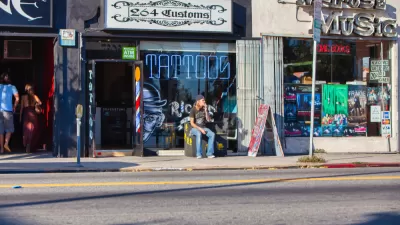Undergraduates face special challenges and one of them is in finding a planning-related program. The following tips may make the search easier.

While most of my advice columns are aimed at graduate students (current, prospective, and recently graduated), much of the information is relevant to undergraduates as well. However, there are a few areas where undergraduates face special challenges and one of them is in finding a planning-related program. The following tips may make the search easier.
Accredited Programs: Those who know from the start that they want to be a planner may decide to enroll in an accredited undergraduate planning program. While more narrowly focused than the other degree programs in this listing they have a place for students who know what they want and who are concerned about being employable straight out of college. The Planning Accreditation Board lists all accredited programs on its web site, including undergraduate ones: http://www.planningaccreditationboard.org/index.php?id=30 (search for "Bachelor").
Programs in Planning Departments: In addition, many schools of planning with an accredited graduate degree program have an undergraduate degree in urban or environmental studies. At these schools the undergraduate program is a broader, liberal arts or environmental studies type of degree but undergraduate students who decide they want to gain more professional knowledge and skills can typically take professional courses. These programs can be a great place for those who think they might want to be planners but aren't sure. The ACSP web site lists both types of undergraduate programs on this page (see the columns to the right with a cross in the "U" column and omit the accredited ones on the list above): http://www.acsp.org/education_guide/schools
Transferring: Many students only fund out about planning once they are already enrolled as undergraduates. It is possible to transfer into planning programs as a sophomore or junior though it will be substantially simpler to transfer to non-accredited programs as their curricula are likely more flexible and more of a student's prior coursework is likely to count toward degree requirements.
Urban Studies, Environmental Studies, Public Affairs, Geography, Sociology, Government, Architectural Studies, Landscape Architecture, etc: There are literally hundreds of other options for students interested broadly in the area of planning including broad majors like environmental studies or even accredited programs like undergraduate landscape architecture. This is a very common route into the profession-students major in a related field and then do a gradaute degree in planning.
Overall, there are lots of different paths becoming a planner and undergraduates have a great deal of flexibility.
Over the next year or so the Association of Collegiate Schools of Planning is examining the issue of undergraduate planning education. I'm on that committee ably led by David Sloane at USC. Some of the information in this blog comes from an inventory that I've been compiling, ably helped by graduate student Yiwen Shao.

Planetizen Federal Action Tracker
A weekly monitor of how Trump’s orders and actions are impacting planners and planning in America.

Map: Where Senate Republicans Want to Sell Your Public Lands
For public land advocates, the Senate Republicans’ proposal to sell millions of acres of public land in the West is “the biggest fight of their careers.”

Restaurant Patios Were a Pandemic Win — Why Were They so Hard to Keep?
Social distancing requirements and changes in travel patterns prompted cities to pilot new uses for street and sidewalk space. Then it got complicated.

Platform Pilsner: Vancouver Transit Agency Releases... a Beer?
TransLink will receive a portion of every sale of the four-pack.

Toronto Weighs Cheaper Transit, Parking Hikes for Major Events
Special event rates would take effect during large festivals, sports games and concerts to ‘discourage driving, manage congestion and free up space for transit.”

Berlin to Consider Car-Free Zone Larger Than Manhattan
The area bound by the 22-mile Ringbahn would still allow 12 uses of a private automobile per year per person, and several other exemptions.
Urban Design for Planners 1: Software Tools
This six-course series explores essential urban design concepts using open source software and equips planners with the tools they need to participate fully in the urban design process.
Planning for Universal Design
Learn the tools for implementing Universal Design in planning regulations.
Heyer Gruel & Associates PA
JM Goldson LLC
Custer County Colorado
City of Camden Redevelopment Agency
City of Astoria
Transportation Research & Education Center (TREC) at Portland State University
Camden Redevelopment Agency
City of Claremont
Municipality of Princeton (NJ)






























